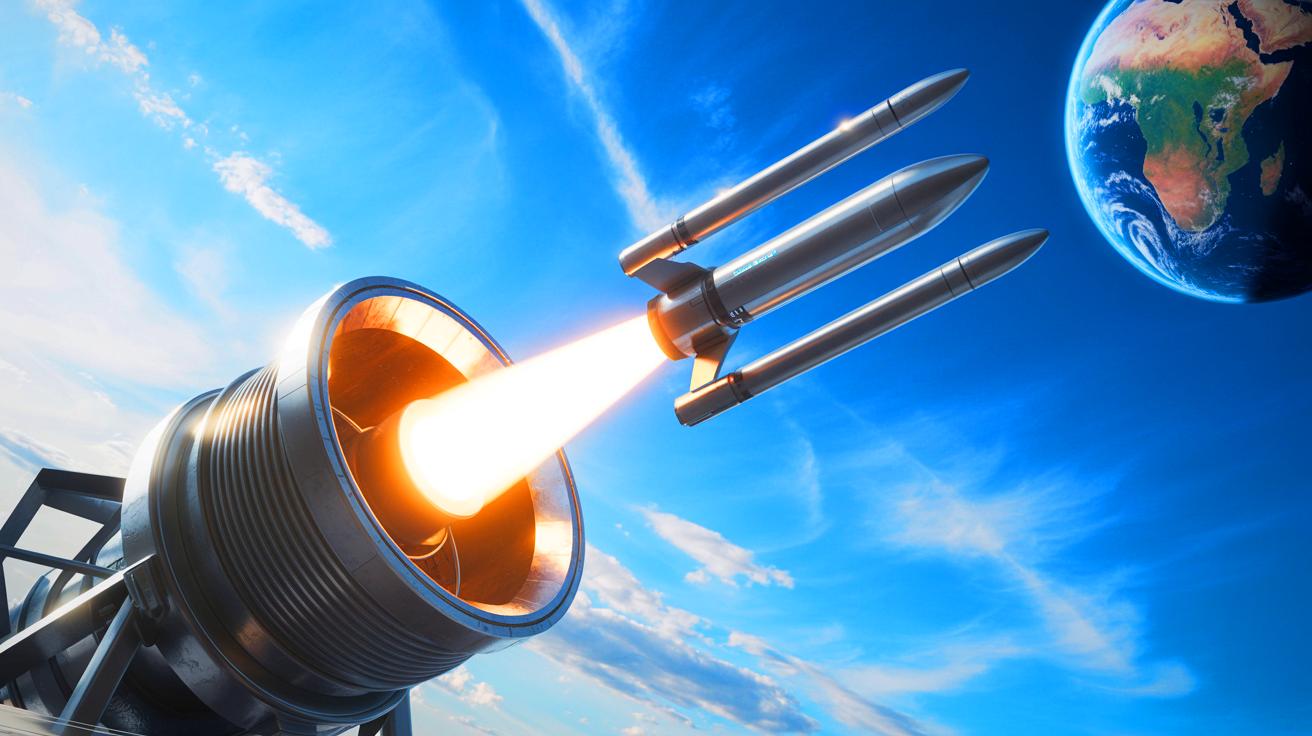- 🚀 SpinLaunch is revolutionizing satellite deployment with its innovative centrifugal cannon technology.
- 💡 This approach offers a more cost-effective and environmentally friendly alternative to traditional rocket launches.
- 🌍 The company’s Meridian Space constellation aims to provide high-speed communication services at reduced costs.
- 🔧 Plans for a larger Orbital Accelerator could increase satellite launch frequency, raising concerns about space debris.
In the rapidly evolving landscape of space exploration, SpinLaunch, a pioneering startup from California, is making waves with its groundbreaking approach to satellite launches. By leveraging a massive centrifugal cannon, the company aims to revolutionize how microsatellites are deployed into low-Earth orbit. This innovative strategy not only promises to reduce costs but also to significantly decrease the environmental impact associated with traditional space missions. With substantial backing and the potential to compete with industry giants like SpaceX, SpinLaunch is on the brink of transforming satellite deployment into a more efficient and sustainable endeavor. As the company prepares for its upcoming launches, the implications for the industry are profound.
A New Era of Satellite Launches
SpinLaunch is introducing a paradigm shift in satellite deployment that could have far-reaching implications. At the core of this shift is a colossal centrifugal cannon, capable of launching spacecraft at unprecedented speeds. This approach is designed not only to cut down on the financial costs associated with rocket launches but also to reduce the environmental impact that accompanies them. The company’s ambitious Meridian Space constellation is set to play a critical role, with its first batch of microsatellites poised for launch in the near future.
These microsatellites, with a diameter of 7.5 feet and a weight of approximately 154 pounds, are innovatively stacked in a “launch bus.” This design reduces overall weight, a crucial factor in surpassing the current record for the most satellites launched simultaneously, a record held by SpaceX. With a strong financial base and a history of technological advancements, SpinLaunch is not just ready to compete but potentially to lead in a field dominated by well-established players.
The Revolutionary Launch System
SpinLaunch’s cutting-edge deployment system is a testament to innovation in the space industry. Utilizing a vacuum-sealed chamber and spinning arms, the system accelerates payloads to remarkable speeds. The Suborbital Accelerator has successfully launched ten rockets into suborbital flight from its New Mexico facility, demonstrating the system’s capability. These launches witness objects reaching velocities of up to 5,000 mph and withstanding forces as high as 10,000 Gs before entering the upper atmosphere.
One of the primary advantages of this system is its cost-effectiveness. SpinLaunch projects that commercial launches could cost between $1,250 and $2,500 per kilogram, a fraction of the expense associated with SpaceX’s Falcon 9 rockets. Additionally, the lack of greenhouse gas emissions and the elimination of booster rockets contribute to a more sustainable approach, addressing both environmental concerns and the growing issue of space debris.
Implications for the Satellite Industry
SpinLaunch’s technology holds the potential to transform the satellite industry by offering a more affordable and eco-friendly launch alternative. By challenging the existing norms, SpinLaunch is poised to reshape the competitive landscape, making space more accessible. Their Meridian Space constellation promises high-speed communication services at reduced costs, potentially democratizing space-based services.
The company’s ambitions extend beyond current capabilities, with plans to develop a larger Orbital Accelerator. This advancement could allow for up to five commercial payloads to be launched daily, significantly increasing the frequency of satellite launches. However, this increased activity in low-Earth orbit raises concerns about potential issues such as spacecraft collisions, light pollution, and interference with astronomical observations. As the industry progresses, these challenges must be carefully managed to ensure sustainable growth.
Looking Ahead: Challenges and Opportunities
While SpinLaunch’s advancements offer exciting prospects, they also present challenges that need careful consideration. The potential increase in satellite activity in low-Earth orbit could exacerbate existing issues like space debris and atmospheric pollution from re-entering spacecraft. As SpinLaunch moves forward with its ambitious plans, it will be crucial to address these concerns and strive for sustainable solutions that balance growth and responsibility.
The success of SpinLaunch’s upcoming launches could set a new standard for satellite deployment, paving the way for a future where space is more accessible and sustainable. Yet, the question remains: how will the industry adapt to these changes, and what steps will be taken to mitigate the potential risks associated with increased activity in low-Earth orbit?
This article is based on verified sources and supported by editorial technologies.
Did you like it? 4.5/5 (30)
